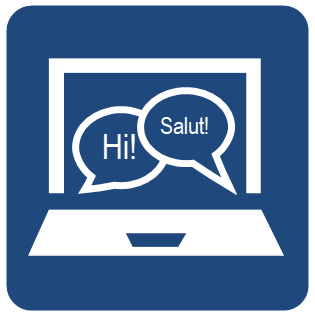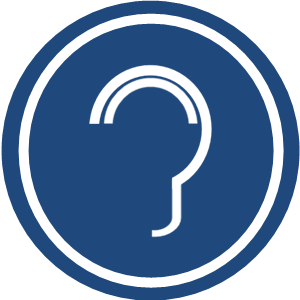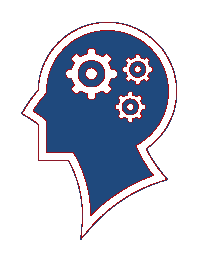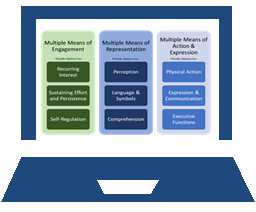Strategies to Ensure Progress in Language Acquisition for ELL High School Students
Jen Kim
Introduction
The Issue
 With more than 34,000 English Language Learners (ELLs) enrolled in Ontario’s K–12 schools, the provincial government has expressed its commitment to “provide the best environment for students…to encourage them to continue their education through the K–12 and postsecondary levels and to stay and live and work in Ontario” (Ontario Association of School Districts International, n.d.). Yet, despite these intentions, the system appears to be falling short. In my two years of teaching at a private high school in Ontario, it has become increasingly evident that many ELL students are not making adequate progress in their English language acquisition. Observations from colleagues further highlight that students often rely on artificial intelligence to complete assignments, write essays, and design presentations. A similar challenge exists in the United States, where a recent RAND Corporation survey of 7,500 K–12 teachers and 1,300 principals revealed that nearly half felt unprepared or only somewhat prepared to teach multilingual learners (Najarro, 2025). Teachers have also reported that ELL students tend to remain socially segregated within their native cultural groups, limiting opportunities for authentic interaction with English-speaking peers. Ironically, the widespread availability of digital translators and large language models often hinders, rather than advances, the development of English fluency. This raises pressing questions: What underlying factors contribute to this stagnation in ELL progress, and what practical strategies can educators employ to promote meaningful and measurable improvements in language acquisition?
With more than 34,000 English Language Learners (ELLs) enrolled in Ontario’s K–12 schools, the provincial government has expressed its commitment to “provide the best environment for students…to encourage them to continue their education through the K–12 and postsecondary levels and to stay and live and work in Ontario” (Ontario Association of School Districts International, n.d.). Yet, despite these intentions, the system appears to be falling short. In my two years of teaching at a private high school in Ontario, it has become increasingly evident that many ELL students are not making adequate progress in their English language acquisition. Observations from colleagues further highlight that students often rely on artificial intelligence to complete assignments, write essays, and design presentations. A similar challenge exists in the United States, where a recent RAND Corporation survey of 7,500 K–12 teachers and 1,300 principals revealed that nearly half felt unprepared or only somewhat prepared to teach multilingual learners (Najarro, 2025). Teachers have also reported that ELL students tend to remain socially segregated within their native cultural groups, limiting opportunities for authentic interaction with English-speaking peers. Ironically, the widespread availability of digital translators and large language models often hinders, rather than advances, the development of English fluency. This raises pressing questions: What underlying factors contribute to this stagnation in ELL progress, and what practical strategies can educators employ to promote meaningful and measurable improvements in language acquisition?
Theoretical Background
Social Cultural Theory
 Vygotsky’s Social Cultural Theory postulates that language learning is socially mediated, in which scaffolding within a Zone of Proximal Development is essential to the progress of language (Vygotsky, 1978). These natural and authentic connections with real people in real-life context are vital to making meaning to the language learner and for all learners in any subject. Being immersed naturally and regularly in conversation with a native English speaker results in a subconscious and tangible progress of ELL students in their listening and speaking abilities (Marian, Shook, & Schroeder, 2013). ELL students must have many opportunities to interact with English-proficient peers both in and out of the classroom (Firth & Wagner, 1997). In short, they require a system where authentic communication moves them seamlessly through the zone of proximal development (Vygotsky, 1978).
Vygotsky’s Social Cultural Theory postulates that language learning is socially mediated, in which scaffolding within a Zone of Proximal Development is essential to the progress of language (Vygotsky, 1978). These natural and authentic connections with real people in real-life context are vital to making meaning to the language learner and for all learners in any subject. Being immersed naturally and regularly in conversation with a native English speaker results in a subconscious and tangible progress of ELL students in their listening and speaking abilities (Marian, Shook, & Schroeder, 2013). ELL students must have many opportunities to interact with English-proficient peers both in and out of the classroom (Firth & Wagner, 1997). In short, they require a system where authentic communication moves them seamlessly through the zone of proximal development (Vygotsky, 1978).
BICS and CALP Theory
In Jim Cummins’ BICS and CALP theory, he makes a clear distinction between Basic Interpersonal Communication Skills (BICS) and Cognitive Academic Language Proficiency (CALP). An English Language Learner may seem fluent in social language but struggles with academic language, particularly in subjects with highly specific vocabulary (Cummins, 1981. In the case of ELL high school students, subject-specific vocabulary in subjects like science, math, or history is overwhelming because of the sheer quantity of new vocabulary terms. The seemingly unscrupulous use of Artificial Intelligence may very well be the natural consequence of learners caught in an unintentional trap of cognitive overload.
Cognitive Load Theory
VanPatten (2015) incorporates principles of Cognitive Load Theory into his model of second language acquisition by emphasizing the importance of minimizing extraneous cognitive demands during instruction. This allows learners to more effectively process and internalize new linguistic input. For novice learners, explicit instruction that includes modeling and the use of chunking strategies is particularly effective. Additionally, employing visual aids, gestures, and simplified language input helps to reduce the burden on working memory, thereby facilitating comprehension and retention. A key pedagogical challenge lies in developing an instructional framework that synthesizes Cognitive Load Theory, Sociocultural Theory, and the distinction between basic interpersonal communicative skills (BICS) and cognitive academic language proficiency (CALP), ensuring that learners acquire both everyday and academic language in a cognitively manageable and socially contextualized manner.
Pedagogical Frameworks: UDL and Wyner’s Three Components of Language Learning Principles
Universal Design for Learning
The Universal Design for Learning Framework is a theoretical framework that ensures teaching meets the needs of all learners, including ELLs by providing multiple means of representation, engagement, and expression. (CAST, 2018). By using visuals, audio files and other multimedia to support comprehension and allow for expression, it offers students varied ways to learn, express understanding and scaffold their learning of the second language with supports like audio files, multimodal media, sentence frames, glossaries and graphic organizers. (CAST, 2018).
Wyner’s Fluent Forever Language Learning Principles
 Gabriel Wyner—a self-taught polyglot, author of Fluent Forever, and developer of the Fluent Forever app—integrates core principles of language acquisition into a comprehensive framework. This framework incorporates elements of Universal Design for Learning (UDL), Cognitive Load Theory, the BICS and CALP distinction, and Sociocultural Theory, which culminate in a three-part model for effective language learning.
Gabriel Wyner—a self-taught polyglot, author of Fluent Forever, and developer of the Fluent Forever app—integrates core principles of language acquisition into a comprehensive framework. This framework incorporates elements of Universal Design for Learning (UDL), Cognitive Load Theory, the BICS and CALP distinction, and Sociocultural Theory, which culminate in a three-part model for effective language learning.
- Master pronunciation first
- Don’t translate
- Use a spaced repetition system (Wyner, 2014).
Master Pronunciation First
Wyner postulates that students must learn the sounds of a language first because while mastering the sounds of a language, one’s ears become attuned to the sounds, which makes vocabulary acquisition, listening comprehension, and speaking come quickly (Wyner, 2014). A common struggle for ELL learners is the tip-of-the-tongue (TOT) state, a temporary mental state in language production where it is difficult to retrieve an intended word. This state indicates the presence of more knowledge than is currently accessible. (Clearly et al., 2021). Practicing whole phrases and vocabulary correctly in the target language helps one develop a good accent from the start and remember the sound and meaning of the word as one chunk in the neurological maze of networks that make meaning in the brain.
Don’t Translate
Wyner also explains that one needs to learn to think in the target language rather than using cognitive energy to translate (Wyner, 2014). This is possible only through immersive experiences. Over time, as exposure to the second language increases, sensorimotor engagement strengthens, meaning that learners begin to conceptualize and experience actions in the target language rather than translating them (Vukovic, 2014). While real-life, authentic immersion remains the most natural way to meaningful listening and speaking experiences in a target language, digital applications now offer alternative means of achieving immersion experiences in second language learning. Today’s large language models can be personalized to imitate authentic conversations and interactions with native speakers (Yang, 2025).
Use Space Repetition System (SRS)
A space repetition system or SRS is a concept that originates from language bloggers and software developers that uses flash cards to input customized content into one’s long-term memory (Wyner, 2014). It is a method that involves using a very prescribed plan that regularly engages the learner in retaining words by associating them with visuals, experiences, or phrases. In a 2024 study, Kosho investigated effective strategies for enhancing reading comprehension among English Language Learners (ELLs) and found that explicitly teaching high-frequency and academic vocabulary—supported by contextual cues and visual aids—significantly contributed to ELL students’ reading comprehension development (Kosho, 2024). Digital applications schedule reviews in a systematic way that limits the number of new “cards” (words or phrases) learned daily to avoid cognitive overload.
Instructional Strategies and Tools to Assist in the ELL Classroom
Educational technology uses “emerging and existing technologies to improve learning experiences in a variety of instructional settings” (Huang et al., 2019). Drawing on Wyner’s evidence-based system, along with the supporting frameworks and theories previously discussed, the following section outlines practical strategies that can be integrated into high school classrooms to effectively support ELL students in acquiring a second or additional language. Assistive tools not only support English Language Learners (ELLs) but also help to demystify the language acquisition process for all students, including those with learning and physical exceptionalities. The Universal Design for Learning (UDL) framework offers a valuable lens through which educators can integrate these tools to enhance language instruction in a classroom setting that is inclusive for all students.
Authentic Listening Opportunities
 Daily classroom listening activities offer consistent English language models for ELL students. Authentic listening opportunities in varied formats are essential for developing pronunciation. For introverted or beginner learners, the ability to privately replay videos, take notes, and hear peer responses transforms listening from a passive task into an active, engaging process. Educational applications such as Edpuzzle and Listenwise provide students with access to subject-specific audio and video content, featuring closed captioning, adjustable playback speeds, and interactive comprehension questions. These tools support active listening by allowing learners to pause, rewind, and review segments, thereby strengthening auditory discrimination and pronunciation skills. Additionally, text-to-speech features that employ natural-sounding voices enable learners to hear accurate pronunciation while reading, reinforcing the connection between spoken and written language. Many of these tools are freely available online, increasing accessibility for students from diverse socioeconomic backgrounds. The following is a list of exemplary digital tools to enhance listening skills in ELL students:
Daily classroom listening activities offer consistent English language models for ELL students. Authentic listening opportunities in varied formats are essential for developing pronunciation. For introverted or beginner learners, the ability to privately replay videos, take notes, and hear peer responses transforms listening from a passive task into an active, engaging process. Educational applications such as Edpuzzle and Listenwise provide students with access to subject-specific audio and video content, featuring closed captioning, adjustable playback speeds, and interactive comprehension questions. These tools support active listening by allowing learners to pause, rewind, and review segments, thereby strengthening auditory discrimination and pronunciation skills. Additionally, text-to-speech features that employ natural-sounding voices enable learners to hear accurate pronunciation while reading, reinforcing the connection between spoken and written language. Many of these tools are freely available online, increasing accessibility for students from diverse socioeconomic backgrounds. The following is a list of exemplary digital tools to enhance listening skills in ELL students:
- Edpuzzle (Edpuzzle, Inc., 2024): Enables students to watch captioned videos at variable speeds, pause and replay content, and engage with embedded comprehension questions. ELLs, including those with learning disabilities, report that Edpuzzle facilitates access to content and offers flexibility to review material as needed (Andujar & Nadif, 2020).
- Kurzweil 3000 (Kurzweil Education, Inc., n.d.): Is a multimodal learning platform that provides text-to-speech support for documents, PDFs, and websites, allowing students to read and listen simultaneously. In one study, 80% of students with attention disorders reported increased reading speed, reduced distractions, and lower stress levels (Hecker et al., 2002). The tool offers 14 English accents, both male and female, to expose learners to regional variation.
- Forvo (Forvo Media SL, n.d.): Is an online pronunciation dictionary offering native speaker recordings of vocabulary in authentic contexts, supporting accurate pronunciation and listening comprehension.
- Listenwise (Listen Innovation, Inc., n.d.): Delivers curriculum-aligned podcasts enriched with ELL supports such as transcripts, comprehension quizzes, and exposure to academic English through current event topics.
Multimodal Reading Opportunities that Avoid Translation
 Students learning English as an additional language benefit from tools that support vocabulary development and reduce cognitive load during reading. Features such as text-to-speech, visual dictionaries, monolingual English definitions, and pre-taught, subject-specific vocabulary lists help learners engage more fully with texts without relying on translation. These supports free up cognitive resources, allowing students to focus on comprehension and fluency. The following digital tools are particularly effective:
Students learning English as an additional language benefit from tools that support vocabulary development and reduce cognitive load during reading. Features such as text-to-speech, visual dictionaries, monolingual English definitions, and pre-taught, subject-specific vocabulary lists help learners engage more fully with texts without relying on translation. These supports free up cognitive resources, allowing students to focus on comprehension and fluency. The following digital tools are particularly effective:
- Kurzweil 3000 (Kurzweil Education, Inc., n.d.)– provides reading tools like visual dictionaries, text-to-speech options, graphic organizers, and outlines that can be made based on extracted reader’s highlights, also creates customized vocabulary lists with definitions for highlighted words to support specialized vocabulary learning in specific subject areas
- Google Read & Write (Everway Opco Ltd., 2025) – allows text-to-speech with synchronized highlighting, helps students decode with aural reinforcement, supports phonemic awareness, provides a picture dictionary with visuals for words, offers in-English definitions
Active Writing Opportunities that Avoid Translation
 Furthermore, students need help to write in English without the use of translation tools. Relying on predictive text features on many premium versions of readily available applications causes an overreliance on these tools and does not allow students opportunities to think and write in English (Ferlazzo, 2024). In addition, predictive text applications often suggest ideas rather than just highlighting grammar and spelling irregularities, which hinders students’ thinking and their opportunity to write original thoughts without interruption. The overuse of predictive text features is unavoidable unless educators deliberately intervene with alternative solutions. The following tools are useful for writing with some help, such as grammar and spelling corrections, without predictive text features that offer ideas:
Furthermore, students need help to write in English without the use of translation tools. Relying on predictive text features on many premium versions of readily available applications causes an overreliance on these tools and does not allow students opportunities to think and write in English (Ferlazzo, 2024). In addition, predictive text applications often suggest ideas rather than just highlighting grammar and spelling irregularities, which hinders students’ thinking and their opportunity to write original thoughts without interruption. The overuse of predictive text features is unavoidable unless educators deliberately intervene with alternative solutions. The following tools are useful for writing with some help, such as grammar and spelling corrections, without predictive text features that offer ideas:
- Google Docs with Smart Compose off (Google, n.d.) – by adjusting preferences under Tools & Preferences, this application will do basic grammar and spelling corrections but not suggest ideas
- Grammarly Free Version(Grammarly, Inc., 2025)– does not make rewording suggestions
- Microsoft Editor (Microsoft Corporation, 2025) available in Word or Edge – will catch grammar, spelling and basic punctuation errors but won’t suggest sentence completion ideas – also works inMicrosoft 365
- ProwritingAid Free Version (Orpheus Technology Limited, 2024) – will give grammar, spelling corrections but will not autocomplete or use AI writing tools
It is essential that educators provide scaffolding tools such as sentence starters, word banks, visual vocabulary supports, and content-specific phrases to support language development, rather than relying on predictive text applications (Ferlazzo, 2024).
Active Speaking Opportunities that Avoid Translation
 In the same way that learners need to write English to get better at it, so too must they speak English regularly, even if it is not perfect (Gibbons, 2015). Many digital applications exist with little to no risk on the part of the learner to practice their pronunciation and receive real-time feedback through social media-like platforms or virtual bots that give specific feedback to students’ oral language production. The latest large language model technology has made custom feedback possible.
In the same way that learners need to write English to get better at it, so too must they speak English regularly, even if it is not perfect (Gibbons, 2015). Many digital applications exist with little to no risk on the part of the learner to practice their pronunciation and receive real-time feedback through social media-like platforms or virtual bots that give specific feedback to students’ oral language production. The latest large language model technology has made custom feedback possible.
- HelloTalk (HelloTalk Learn Languages App, n.d.) – is a language exchange social platform that helps students connect with and practice with native speakers
- Speechling (Speechling, Inc., n.d.) – allows students to record themselves and get a native speaker to give them feedback
- Flip (formerly Flipgrid) (Microsoft Corporation, n.d.)– students record short videos responding to prompts, teachers and peers reply – low-pressure, visual/audio prompts support multiple takes, free for educators
Deliberate Space Repetition System (SRS) in Each Class
Students must have a specific method and plan in place to consistently work at building their vocabulary in various subject areas. Research has shown that to learn new words and keep them in one’s long-term memory, they must be learned systematically while being associated with a visual, an experience, a memory or a keyword story (Sadoski, 2005). In accordance with Dual Coding Theory, Sadoski found in 2005, that this type of systematic memorization led to improved long-term vocabulary learning (Sadoski, 2005). Furthermore, reviewing information at increasing intervals or spaced repetition and recalling it from memory, leads to deeper, longer-lasting retention (Nakata & Webb, 2016). Teachers can incorporate the use of digital tools to help in the systematic review of key words in various subjects. Some of the most useful applications are listed here:
- Quizlet (Quizlet Inc., n.d.)– enables teachers and students to create flashcards with images, audio and example sentences to reinforce explicit vocabulary learning
- Memrise (Memrise Ltd., n.d.)– uses gamified vocabulary practice with native-speaker videos and spaced repetition to build retention
- Anki (Elmes, n.d.)– is a digital platform for making customized flash cards, uses images, sounds, sentences on flashcards to deepen learning, develops subject-specific vocabulary
Conclusion
Second language acquisition does not occur automatically by mere immersion in environments where the target language is spoken. For high school English language learners (ELLs), intentional instructional approaches that integrate digital technologies can significantly enhance language development. These strategies should offer structured, daily opportunities for students to engage in purposeful listening, speaking, reading, and writing activities—explicitly without reliance on predictive text or translation tools—to foster authentic language use and proficiency. In addition, clearly structured practice with subject-specific vocabulary—especially through a spaced repetition system (SRS)—can build a strong foundation for pronunciation, reading skills, and eventually the confidence to write and speak more fluently. Some argue that banning translation tools completely may leave beginner ELL students feeling lost. High-quality translation tools can be incorporated under supervision as temporary support, offering help when needed without replacing the goal of independent language use.
References
Andujar, A., & Nadif, F. Z. (2020). Evaluating an inclusive blended learning environment in EFL: A flipped approach. Computer Assisted Language Learning, 35(5–6), 1138–1167. https://doi.org/10.1080/09588221.2020.1774613
CAST. (2018). Universal Design for Learning guidelines version 2.2. http://udlguidelines.cast.org
Cleary, A. M., McNeely-White, K., Russell, S. A., Huebert, A. M., & Hausman, H. (2021). The tip-of-the-tongue state as a form of access to information: Use of tip-of-the-tongue states for strategic adaptive test-taking. Journal of Applied Research in Memory and Cognition, 10(1), 131–142. https://doi.org/10.1016/j.jarmac.2020.08.013
Cummins, J. (1981). The role of primary language development in promoting educational success for language minority students. In California State Department of Education (Ed.), Schooling and language minority students: A theoretical framework (pp. 3–49). California State University, Evaluation, Dissemination and Assessment
Damien Elmes. (n.d.). Anki [Computer software]. https://apps.ankiweb.net/
EDpuzzle, Inc. (2024). Edpuzzle (Version 5.0.0) [Mac App Store application]. App Store. https://apps.apple.com/app/edpuzzle/id919598209
Everway Opco Ltd. (2025, June 3). Read & Write for Google Chrome (Version 2.1.548) [Chrome extension]. Chrome Web Store. https://chromewebstore.google.com/detail/readwrite-for-google-chro/inoeonmfapjbbkmdafoankkfajkcphgd
Ferlazzo, L. (2024, June 25). When is it OK to use Google Translate in the English-learner classroom? Education Week. https://www.edweek.org/teaching-learning/opinion-the-use-or-misuse-of-google-translate-in-the-ell-classroomwhen-is-it-ok-to-use-google-translate-in-the-english-learner-classroom/2024/06
Firth, A., & Wagner, J. (1997). On discourse, communication, and (some) fundamental concepts in SLA research. The Modern Language Journal, 81(3), 285–300.
Forvo Media SL. (n.d.). Forvo app: Pronunciation guide for iOS & Android [Mobile application information page]. Forvo. https://forvo.com/app-ios-android-info/
Gibbons, P. (2015). Scaffolding language, scaffolding learning: Teaching English language learners in the mainstream classroom (2nd ed.). Heinemann.
Google LLC. (2024). YouTube (Version 19.23) [Mac App Store application]. App Store. https://apps.apple.com/app/youtube/id544007664
Google. (n.d.). Google Docs [Web-based word processing application]. https://docs.google.com
Grammarly, Inc. (2025). Grammarly (Version 1.128.1) [Mac computer software]. App Store. https://apps.apple.com/app/grammarly/id1462114288
Hecker, L., Burns, L., & Katz, L. (2000). Benefits of assistive reading software for students with attention disorders. Annals of Dyslexia, 52(1), 1–17.
https://doi.org/10.1007/s11881-002-0015-8
HelloTalk Learn Languages App. (n.d.). HelloTalk [iOS mobile app]. App Store. https://apps.apple.com/app/hellotalk-language-exchange/id557130558
Huang, R., Spector, J. M., & Yang, J. (Eds.). (2019). Educational technology: A primer for the 21st century. Springer. https://doi.org/10.1007/978-981-13-6643-7
Jiang, Y., Wang, Q., & Weng, Z. (2022). The influence of technology in educating English language learners at-risk or with disabilities: A systematic review. Center for Educational Policy Studies Journal, 12(4), 53–74. https://doi.org/10.26529/cepsj.1426
Knaak, T., Grünke, M., & Barwasser, A. (2021). Enhancing vocabulary recognition in English foreign language learners with and without learning disabilities: Effects of a multi-component storytelling intervention approach. Learning Disabilities: A Contemporary Journal, 19(1), 69–85. https://doi.org/10.26529/cepsj.1426
Kosho, C. G. (2024). Investigating effective instructional strategies to increase reading comprehension of ELLs (Doctoral study, Walden University). Walden University ScholarWorks. https://scholarworks.waldenu.edu/dissertations/15431
Kurzweil Education, Inc. (n.d.). Kurzweil 3000 [Computer software]. https://www.kurzweiledu.com/products/k3000.html
Listen Innovation, Inc. (n.d.). Listenwise [Mobile app]. https://listenwise.com/
Marian, V., Shook, A., & Schroeder, S. R. (2013). Bilingual two-way immersion programs benefit academic achievement. Bilingual Research Journal, 36(2), 167–186. https://doi.org/10.1080/15235882.2013.818075
Memrise Ltd. (n.d.). Memrise [Mobile app]. App Store. https://apps.apple.com/app/memrise-learn-languages/id635966718
Microsoft Corporation. (2024). Microsoft Editor (Version X.X) [Browser extension]. Microsoft Edge Add-ons Store. https://microsoftedge.microsoft.com/addons/detail/microsoft-editor/abc123def456
Microsoft Corporation. (n.d.). Flip [Mobile app]. App Store. https://apps.apple.com/app/flip/id924420909
Najarro, I. (2025, June 19). Teachers aren’t prepared or equipped to teach English learners, survey finds. Education Week. https://www.edweek.org/teaching-learning/teachers-arent-prepared-or-equipped-to-teach-english-learners-survey-finds/2025/06
Nakata, T., & Webb, S. (2016). Does studying vocabulary in smaller sets increase learning? The effects of part and whole learning on second language vocabulary acquisition. Studies in Second Language Acquisition, 38(3), 523–552. https://doi.org/10.1017/S0272263115000236
Ontario Association of School Districts International. (n.d.). How to pursue international education in Ontario. International Education in Ontario. https://www.oasdi.ca/international%20education/ontario/#:~:text=The%20Ontario%20Curriculum%20is%20widely,2223
Orpheus Technology Limited. (2024). ProWritingAid (Version 2.5.41290) [Computer software]. https://prowritingaid.com/en/App/DesktopHistory
Quizlet Inc. (n.d.). Quizlet [Mobile app]. App Store. https://apps.apple.com/app/quizlet/id546473125
Sadoski, M. (2005). A dual coding view of vocabulary learning. Reading & Writing Quarterly, 21(3), 221–238. https://doi.org/10.1080/10573560590949359
Speechling, Inc. (n.d.). Speechling [Mobile app]. App Store. https://apps.apple.com/app/speechling/id1162382653
VanPatten, B. (2015). While we’re on the topic: BVP on language, acquisition, and classroom practice. ACTFL.
Vukovic, N., & Shtyrov, Y. (2014). Cortical motor systems are involved in second-language comprehension: Evidence from rapid mu-rhythm desynchronisation. NeuroImage, 102, 695–703. https://doi.org/10.1016/j.neuroimage.2014.08.039
Vygotsky, L. S. (1978). Mind in society: The development of higher psychological processes (M. Cole, V. John-Steiner, S. Scribner, & E. Souberman, Eds. & Trans.). Harvard University Press.
Wyner, G. (2025). Fluent Forever [iOS mobile app]. App Store. https://apps.apple.com/app/fluent-forever-language-app/id1408058823
Yang, Q., & Liang, C. (2025). A second-classroom personalized learning path recommendation system based on large language model technology. Applied Sciences, 15(14), 7655. https://doi.org/10.3390/app15147655



